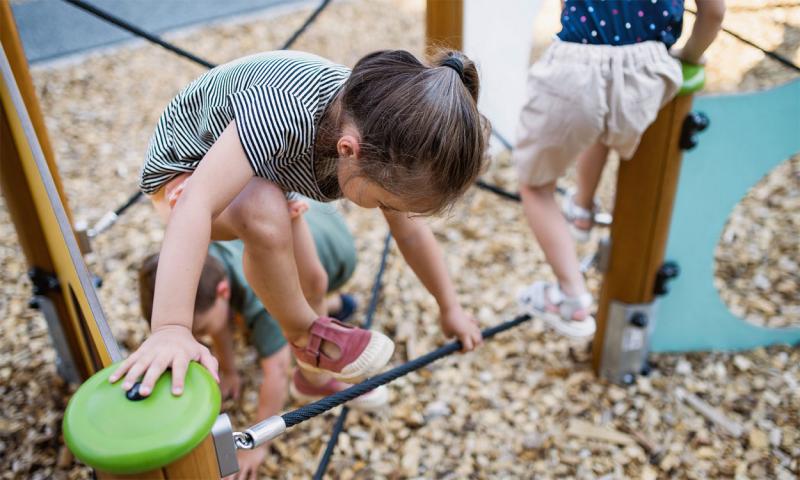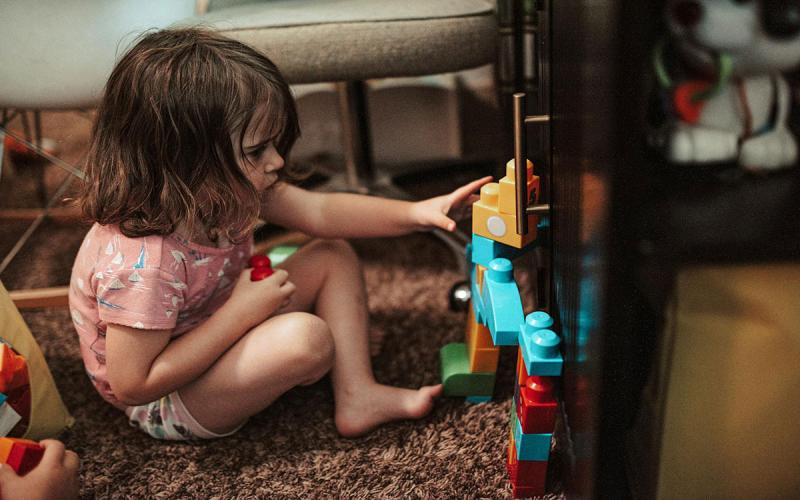
A big eye-opener for me as an educator and parent was watching my kids struggle through their emotions and all the changes brought on by the pandemic. I naturally thought – like many do and we often hear – that kids are tough, and they will bounce back.
Hearing from friends and fellow providers, it appears that the changes from routines, the stress at home and not knowing what to expect set many toddlers and preschoolers into fight-or-flight reactions as ways to deal with the changes, and it is hard for them to “bounce back.”
My favorite definition of resilience (Oxford Languages) is: the capacity to recover quickly from difficulties; toughness. So, if kids are not born tough, how can we teach them to become resilient and recover from the difficulties they will likely face during their childhood? Here are some tips to help them build their own resiliency skills.
Tips for Building Resilience
Create a safe space with props, such as puppets, calming jars, music and art supplies, to help express their emotions/feelings.
- By having these various props and spaces, they will use them to talk/play through their emotions that they may not be able to verbalize.
- Many kids will internalize their emotions, as they are too scared to talk about them in fear that the provider or parents will get upset. These feelings may show up as:
- Sleep issues; not wanting to go to bed or get up.
- Difficulty with transitions, such as going to school, etc.
- Exaggerated reactions to a small crisis.
- Increased difficulty with peers or siblings, such as aggression or withdrawal.
- Clinging to familiar things or family.
- Changes in eating, dressing or toilet habits.
Use real and accurate words when talking about the stressors or events going on. “Sugar coating” may confuse kids and the parents, who will also be helping explain the situations at home.
- You don’t have to go into detail on what is happening, but be honest.
Maintain a daily routine and consistent rules and expectations in your classroom/center.
- This will help them have some sense of “normalcy” when other parts of their life are inconsistent.
Be a good listener and let them openly express their feelings without a reaction/solution.
- My favorite quote: “Sometimes it’s better to react with no reaction.”-Anonymous
- By sitting down and acknowledging their feelings and really taking the time to listen, it will reaffirm that the child can come to you when they are experiencing these feelings and build their resilience.
- To be a good listener you must exhibit these four steps:
- Give full attention (you may need to take the child away from the group of kids or to another room).
- Give eye contact, so they know you care and are listening.
- Ask questions about what you are hearing to get a better understanding, but don’t take over the conversation with your solutions.
- Summarize what they said at the end, and then help them think of how to solve/decrease these emotions or stressors in their life right now.
Other Things to Consider

As you work with children, remember to openly talk about how you, as their teacher, are feeling and how you are handling the situations going on, especially if it is something affecting most of the classroom. Children rely on adults to be their role models and will watch how they are reacting to the stressors and situations. This attachment is one of the most important resiliency factors as they learn how to regulate their emotional experiences.
Some great activities to incorporate into your daily schedule to continue building resiliency skills are: mindfulness activities, reading books talking about feelings, such as: “The Way I Feel,” “Once I Was Very Scared” and “A Terrible Thing Happened,” and making sure to have a safe space/area that kids can go and talk, or just display their emotions.
Using these tips and understanding that being resilient doesn’t come naturally will help you better understand how to teach your kids how to become resilient in today’s society and ever-changing world.


